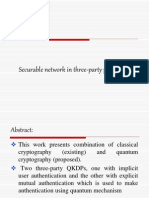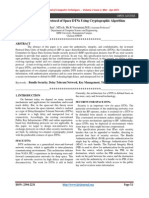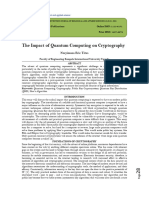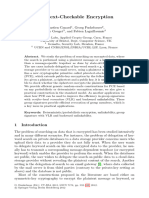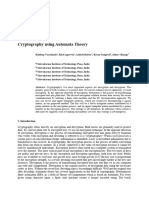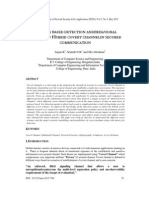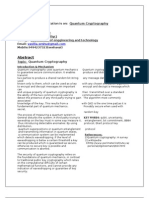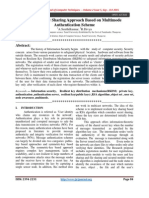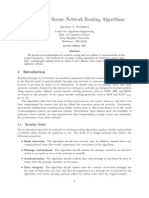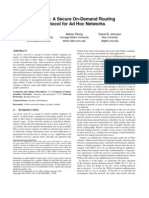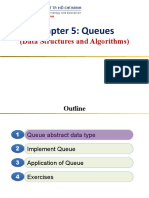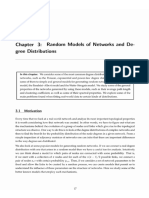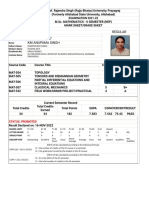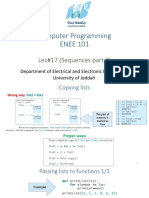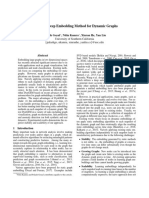A Three Party Authentication For Key Distributed Protocol Using Classical and Quantum Cryptography
A Three Party Authentication For Key Distributed Protocol Using Classical and Quantum Cryptography
Uploaded by
leks_2007Copyright:
Available Formats
A Three Party Authentication For Key Distributed Protocol Using Classical and Quantum Cryptography
A Three Party Authentication For Key Distributed Protocol Using Classical and Quantum Cryptography
Uploaded by
leks_2007Original Title
Copyright
Available Formats
Share this document
Did you find this document useful?
Is this content inappropriate?
Copyright:
Available Formats
A Three Party Authentication For Key Distributed Protocol Using Classical and Quantum Cryptography
A Three Party Authentication For Key Distributed Protocol Using Classical and Quantum Cryptography
Uploaded by
leks_2007Copyright:
Available Formats
IJCSI International Journal of Computer Science Issues, Vol. 7, Issue 5, September 2010 ISSN (Online): 1694-0814 www.IJCSI.
org
148
A Three Party Authentication for Key Distributed Protocol Using Classical and Quantum Cryptography
Suganya Ranganathan1, Nagarajan Ramasamy2 , Senthil Karthick Kumar Arumugam3, Balaji Dhanasekaran4, Prabhu 5 6 7 Ramalingam , Venkateswaran Radhakrishnan , and Ramesh Karpuppiah Assistant Professors, Master Of Computer Applications, Bharathiar University, Nehru College Of Management Coimbatore, Tamilnadu 641105, India.
Abstract In the existing study of third party authentication, for message transformation has less security against attacks such as man-in-the-middle, efficiency and so on. In this approach, we at hand give a Quantum Key Distribution Protocol (QKDP) to safeguard the security in larger networks, which uses the combination of merits of classical cryptography and quantum cryptography. Two three-party QKDPs, one implemented with implicit user authentication and the other with explicit mutual authentication, which include the following: 1. 2. 3. Security against such attacks as the man-in-themiddle, eavesdropping and replay. Efficiency is improved as the proposed protocols contain the fewest number of communication rounds among the existing QKDPs. Two parties can share and use a long-term secret (repeatedly).
product over the WWW (World Wide Web), users sometimes transmits their credit card numbers over the network. This is a dangerous thing to do since it is easy for a hacker to eavesdrop on the network and read all the packets that fly by. Therefore, users sometimes want to encrypt the messages they send, with the goal of keeping anyone who is eavesdropping on the channel from being able to read the contents of the message. The idea of encryption is simple enough. The sender applies an encryption functions to the original plain text message, the resulting cipher text message is sent over the network, and the receiver applies a reverse function known as the decryption to recover the original plain text. The encryption/decryption process generally depends on a secret key shared between the sender and the receiver. When a suitable combination of a key and an encryption algorithm is used, it is sufficiently difficult for an eavesdropper to break the cipher text, and the sender and the receiver can rest assured that their communication is secure. The familiar use of cryptography is designed to ensure privacy-preventing the unauthorized release of information and privacy. It also is used to support other equally important services, including authentication (verifying the identity of the remote participant) and integrity (making sure that the message has not been altered).
To prove the security of the proposed schemes, this work also presents a new primitive called the Unbiased-Chosen Basis (UCB) assumption. Keywords: .Third Party Authentication, QKDP, Preliminaries,
3AQKDP, Unbiased-Chosen Basis, Eavesdropping and Replay Efficiency.
1. Introduction
Computer networks are typically a shared resource used by many applications for many different purposes. Sometimes the data transmitted between application processes is confidential, and the applications would prefer that others be unable to read it. For example, when purchasing a
2. Key Distribution Protocol and Its Mechanism with Classical & Quantum Cryptography
Key distribution protocols are used to facilitate sharing secret session keys between users on communication networks. By using these shared session keys, secure
IJCSI International Journal of Computer Science Issues, Vol. 7, Issue 5, September 2010 ISSN (Online): 1694-0814 www.IJCSI.org
149
communication is possible on insecure public networks. However, various security problems exist in poorly designed key distribution protocols; for example, a malicious attacker may derive the session key from the key distribution process. A legitimate participant cannot ensure that the received session key is correct or fresh and a legitimate participant cannot confirm the identity of other participant. Designing secure key distribution protocols in communication security is a top priority. In some key distribution protocols, two users obtain a shared session key via a Trusted Centre (TC). Since three parties (two users and one TC) are involved in session key negotiations, these protocols are called third-party key distribution protocols, as in contrast with two-party protocols where only the sender and receiver are involved in session key negotiations.
consumed, and need to be reconstructed by the TC and a participant after one QKDP execution.
3. QKDPs Contributions
As mentioned, quantum cryptography easily resists replay and passive attacks, where as classical cryptography enables efficient key verification and user authentication. By integrating the advantages of both classical and quantum cryptography, this work presents 2 QKDPs with the following contributions: Man-in-the-middle attacks can be prevented, eavesdropping can be detected, and replay attacks can be avoided easily. User authentication and session key verification can be accomplished in one step without public discussions between the sender and the receiver. The secret key preshared by a TC and a user can be long term which is repeatedly used. The proposed schemes are first probably secure QKDPs under the random oracle model. In the proposed QKDPs, the TC and a participant synchronize their polarization bases accordingly to a preshared secret key. During the session key distribution, the preshared secret key together with a random string are used to produce another key encryption key to encipher the session key. A recipient will not receive the same polarization qubits even if an identical session key is retransmitted. Consequently, the secrecy of the preshared secret key can be preserved and, thus, this preshared secret key can be long term and repeatedly used between the TC and the participant. Due to the combined use of classical cryptographic techniques with the quantum channel, a recipient can authenticate user identity, verify the correctness and freshness of the session key, and detect the presence of eavesdroppers. Accordingly, the proposed communication rounds among existing QKDPs. The same idea can be extended to design of other QKDPs with or without a TC. The random oracle model is employed to show the security of the proposed protocols. The theory behind the random oracle model proof indicates that when the adversary breaks the three-party QKDPs, then a simulator can utilize the event to break the underlying atomic primitives. Therefore, when the underlying
2.1 Classical Cryptography
In classical cryptography, three-party key distribution protocols utilize challenge response mechanisms or timestamps to prevent replay attacks. However, challenge response mechanisms require at least two communication rounds between the TC and participants, and the timestamp approach needs the assumption of clock synchronization which is not practical in distributed systems (due to unpredictable nature of network delays and potential hostile attacks). Furthermore, classical cryptography cannot detect the existence of passive attacks such as eavesdropping. On the contrary, a quantum channel eliminates eavesdropping, and therefore, replay attacks. This fact can then be used to reduce the number of rounds of other protocols based on challengeresponse mechanism to a trusted center.
2.2 Quantum Cryptography
In quantum cryptography, Quantum Key Distribution Protocols (QKDPs) employ quantum mechanisms to distribute session keys and public discussions to check for eavesdroppers and verify the corrective ness of a session key. However, public discussions require additional communication rounds between a sender and receiver and cost precious qubits. By contrast, classical cryptography provides convenient techniques that enable efficient key verification and user authentication. Previously proposed QKDPs are the theoretical design security proof and the physical implementation. A threeparty QKDP proposed in requires that the TC and each participant preshare a sequence of EPR pairs rather than a secret key. Consequently, EPR pairs are measured and
IJCSI International Journal of Computer Science Issues, Vol. 7, Issue 5, September 2010 ISSN (Online): 1694-0814 www.IJCSI.org
150
primitives are secure, then the proposed three-party QKDPs are also secure.
4. The Preliminaries
Two interesting properties, quantum measurement and nocloning theorem on quantum physics, are introduced in this section to provide the necessary background for the discussion of QKDPs.
achieved only after secure communication using the session key start. The proposed three-party QKDPs are executed purely in the quantum channel and this work does not consider errors caused by environmental noise. The following describes the notation, the first proposed 3AQKDP and its security theorem. The following are the notations, proposed 3AQKDP: R: The rectilinear basis, polarized with two orthogonal directions, (|0) and (|1). D: The diagonal basis, polarized with two orthogonal directions, ((2 (|0) + (|1)) and (2 (|0) - (|1))). (1) Ui: The k-bit identity of a participant. In this paper, we denote UA as the identity of Tom, UB as the identity of Tin and U as a non-fixed participant. h(.): The one-way hash function. The mapping of h(.) is {0,1}* {0,1}m (2)
4.1 Quantum Measurement
Let Tom and Tin be two participants in a quantum channel, where Tom is the sender of qubits and Tin is the receiver. The R basis and the D basis are required to produce or measure qubits. If Tom wants to send a classical bit b, then she creates a qubit and sends it to Tin, based on following rules. If b = 0 (1) and Tom chooses R basis, the qubit is ((|0)(|1)). If b = 0 (1) and Tom chooses D basis, the qubit is ((2 (|0) + (|1)) (2 (|0) - (|1))).
When Tin receives the qubit, he randomly chooses an R basis or D basis and measures the cubit to get the measuring result . If Tin measures the qubit using the same basis as Tom, then = b will always hold; Otherwise, = b holds with a probability . Note that Tin cannot simultaneously measure the qubit in an R basis and D basis, and any eavesdropper activity identified be measuring the qubit will disturb the polarization state of that qubit.
rTU: An 1-bit random string chosen by the TC.6. KTU: The n-bit secret key shared between the TC and a participant, such that KTA is the secret key shared between the TC and Tom. It should be noted that m = u + 2k. Note that the bases R and D, the identity Ui, and the oneway hash function h(.) are publicly known parameters.
6. The Proposed 3AQKDP
6.1 Setup Phase
Let Tom and Tin be 2 users who would like to establish a session key: KTU is the secret key shared between TC and user U. Bit sequence in KTU is treated as the measuring bases between user U and the TC. If (KTU)i = 0, the basis D is chosen; otherwise, the basis R. Note that (KTU)i denotes the ith bit of secret key (KTU). The following describes the 3AQKDP by using the notations defined in previous sections. Here, we assume that every participant shares a secret key with the TC in advance either by direct contact or by other ways. 6.2 Key Distribution Phase The following describes the details of key distribution phase. Assume that the TC has been notified to start the 3AQKDP with Tom and Tin. TC and the users have to perform the 3AQKDP as follows:
4.2 No Cloning Theorem
One cannot duplicate an unknown quantum state. i.e., a user cannot copy a qubit if he/she does not know the polarization basis of the qubit. Bases on this no cloning theorem, we propose the UCB assumption, in which one can identify the polarization basis of an unknown quantum state with a negligible probability to facilitate security proof of the proposed QKDPs.
5. Three-Party Authenticated Quantum Key Distribution Protocol (3AQKDP)
This section presents a 3AQKDP with implicit user authentication, which ensures that confidentiality is only possible for legitimate users and mutual authentication is
IJCSI International Journal of Computer Science Issues, Vol. 7, Issue 5, September 2010 ISSN (Online): 1694-0814 www.IJCSI.org
151
6.2.1 TC
1. The TC generates a random number rTA and a session key SK. TC then computes RTA = h(KTA,rTA) (SK||UA||UB) for Tom and, similarly rTB and RTB = h(KTB,rTB) (SK||UB||UA) for Tin. 2. The TC creates the qubits, QTA, based on (rTA ||RTA)i and (KTA)i for Tom where i = 1;2;..;n and (rTA ||RTA)i denotes the ith bit of the concatenation rTA ||RTA. If (rTA||RTA)i=0, (KTA)i= 0, then (QTA)i is (1/2(|0) + (|1)). If (rTA||RTA)i=1, (KTA)i=0, then (QTA)i is (1/2(|0) - (|1)). If (rTA ||RTA)i = 0 , (KTA)i= 1, then (QTA)i is (|0). If (rTA ||RTA)i = 1 , (KTA)i= 1, then (QTA)i is (|1). (3)
guessing attacks to guess the bases over the quantum channel and thus, the secret key, KTA (or KTB) can be repeatedly used. In item 2 of users, only Tom (or Tin), with the secret key KTA (or KTB) is able to obtain SK||UA||UB (or SK|| UB|| UA) by measuring the qubits QTA (or QTB) and computing h(KTA,rTA) RTA (or h(KTB,rTB) RTB). Hence, Tom (or Tin) alone can verify the correctness of the ID concatenation UA||UB (or UB||UA)
7. Security Proof of 3AQKDP
This section presents a theorem to demonstrate the security of 3AQKDP. A new primitive, Unbiased-Chosen Basis (UCB) assumption, based on the non-cloning theorem is used to facilitate the proof. The UCB assumption describes that one can distinguish the polarization basis of an unknown quantum state with only a negligible probability. Theorem
(4) (5) (6)
TC then sends QTA to Tom. TC creates qubits QTB in the same way for Tin.
(A) be the advantage in breaking the Let AQKD security of 3AQKDP. Let () be the advantage in breaking the UCB assumption used in 3AQKDP.
6.2.2 Users
Tom measures the received QTA qubits depending on KTA. If (KTA)i=0, then the qubit is measured based on the basis D. otherwise, the basis R. Similarly, Tin measures the receiving qubits QTB depending on KTB. Once Tom obtains the measuring results rTA||RTA she then computes SK||UA||UB=h(KTA,rTA) RTA (7)
If the adversary A breaks the AQKD security of 3AQKDP after qini Initiate queries, qse Send queries and qh Hash queries within time t, a UCB assumption attacker will have an advantage to break the UCB security of . That is, (A) 2(qini + qse)2/qini . ()
Where t t + qini Trn: Trn is the time to generate a random number.
The session key SK can be obtained and the values UA and UB can be verified. Similarly Tin gains rTB||RTB then, Tin obtains the session key SK and checks the correctness of UB and UA. In item 1 of TC, the hash value, h(KTA,rTA) (or h(KTB,rTB)), is used to encipher the sequence SK||UA||UB (or SK||UB||UA). Therefore, a recipient will not receive the same polarization qubits even if an identical session key is retransmitted. This also makes an eavesdropper not be able to perform offline
8. Conclusion
This study proposed two three-party QKDPs to demonstrate the advantages of combining classical cryptography with quantum cryptography. Compared with classical three-party key distribution protocols, the proposed QKDPs easily resist replays and passive attacks. This proposed scheme efficiently achieves key
IJCSI International Journal of Computer Science Issues, Vol. 7, Issue 5, September 2010 ISSN (Online): 1694-0814 www.IJCSI.org
152
verification and user authentication and preserves a long term secret key between the TC and each user. Additionally, the requirement of quantum channel can be costly in practice, it may not be costly in the future, Moreover, the proposed QKDPs have been shown secure under the random oracle model. By combining the advantages of classical cryptography with quantum cryptography, this work presents a new direction in designing QKDPs.
He has published and presented around 10 papers in National level Seminars. His interest in research area includes Cloud computing, Mobile computing (security). R. Prabhu is pursuing his Ph.D. He received his professional degree M.C.A, in Computer Applications and also completed his B.Sc in Computer Science from Bharathiar University, Tamilnadu, India. Previously he worked as Technical Recruiter for 2 years. Currently working has as an Asst. Professor of Computer Applications, Nehru College of Management, Coimbatore, Tamilnadu, India from the year 2010. He presented & published papers more than 5 papers in National level seminar. His area of interest in research is Cryptography and Network Security, Information Security, Software Engineering. R. Nagarajan is pursuing his Ph.D. He completed his Post graduate degree in MCA in computer Applications in Bharathidasan University, and he completed his B.Sc in Applied Science (Faculty of Engineering) from Bharathiar University. He has 20 years of experience as Manager-Operations in Bannari Amman Group. Currently working has as an Asst. Professor of Computer Applications, Nehru College of Management, Coimbatore, Tamilnadu, India from the year 2009.Currently He is concentrating on Space Communications using Optic Techniques. He presented & published papers more than 6 papers in National level seminar. His area of interest in research is Cryptography and Network Security, Information Security, Robotics. Dr.D.Balaji presently working as a Director Department of Computer Applications, Nehru College of Management, Coimbatore. He has graduated from Madura College, Madurai, which was established in the year 1887. He has completed his post graduation from the Computer centre, Madurai Kamaraj University. He has also completed M.Phil, and M.B.A., from Madurai Kamaraj University. He has completed Ph.D titled Project Based Organizational Teaching and Learning. He is having overall 13 years of academic experience. He has worked for University of Bedfordshire, UK for 7 years and 1 year for ABB India limited. He has published his research work in 2 international journals, and presented 9 papers in the International conferences and 14 papers in the national conferences. His area of specialization is IT applications in Higher Education and Programming Languages. He has visited many countries like Romania, Jordan, Srilanka, Malaysia, etc., for his research work. Venkateswaran Radhakrishnan pursing Ph.D currently in the Karpagam Academy of higher Education, Karpagam University, Tamilnadu, India, in the field of Cryptography and Network Security. He received his professional degree M.C.A, in Computer Applications and also completed his MBA (Information Technology) from Bharathiar University, Tamilnadu, India, and he received his M.Phil Degree in Computer Science from Bharathidasan University, Tamilnadu, India. He has also worked as an Asst. Professor of Computer Applications, Nehru College of Management, Coimbatore, Tamilnadu, India from the year 2006. He is the institution member of Computer Society of India. He published papers in International Journals and Conferences and also presented paper in more than 10 national seminars and conferences. His research interest area in Cryptography and Network Security, Information Security, Software Engineering, and Relational database Management Systems. Ramesh Kumar.K pursing M.B.A at M.S University, Tirunelveli. Completed his B.E in Computer Science at Anna University. He has experience in teaching for 2 yrs at NCM, Coimbatore and Worked as Software Engineer and has 3yrs of experience in Jayakailash group of companies and also 2 yrs of experience in solid solutions. He has interest on Asp .net, C, C++, Java, Data
References
[1] G.Li Efficient network authentication protocols: Lower bounds and Optimal implementations, Distributed computing, Vol 9, No. 3 pp.1995. [2] J.T.Kohi, The evolution of the Kerberros Authentication Service European conf. proc pp 295-313-1991. B.Nuemann and T. Tso Kerberros An authentication service for computer networks IEEE comm., Vol 32, No.9 pp33-38 1994. [3] W.Stallings, Cryptography and network security: principles and practice, prentice hall 2003. [4] N. Linden, S. Popescu, B. Schumacher, and M. Westmoreland, "Reversibility of local transformations of multiparticle entanglement", quant-ph/9912039 W. Dr, J. I. Cirac, and R. Tarrach, "Separability and distillability of multiparticle quantum systems", Phys. Rev. Lett. 83, 3562 (1999) [5] Ll. Masanes, R. Renner, M. Christandl, A. Winter, and J. Barrett, "Unconditional security of key distribution from causality constraints", quant-ph/0606049 [6] C. H. Bennett, G. Brassard, C. Crpeau, and M.-H. Skubiszewska, "Practical quantum oblivious transfer", Lecture Notes in Computer Science 576, 351 (1991) [7] C. H. Bennett, P. W. Shor, J. A. Smolin, and A. V. Thapliyal, "Entanglement-assisted capacity of a quantum channel and the reverse Shannon theorem", Phys. Rev. Lett. 83, 3081 (1999) [8] P. W. Shor, "Equivalence of additivity questions in quantum information theory", Commun. Math. Phys. 246, 453 (2004) [9] M. B. Hastings, "A counterexample to additivity of minimum output entropy", Nature Physics 5, 255 (2009)
Suganya Ranganathan is pursuing her Ph.D at Karpagam University. She holds her MCA degree from Anna University, Chennai. Also completed her B.Sc Computer Science degree from Bharathiar University, Coimbatore. Being her research area is in Software Testing she also has interest on Security Oriented networks, Digital Image Processing and whole of Software Engineering. She was working as a Software Engineer in USTGlobal for 2 years. And recently entered into academics with 1 year of teaching experience. Organized and also presented papers in national level conferences. A.Senthil Karthick Kumar is a Ph.D. Research Scholar. He completed his B.Sc in Information Technology from Madurai Kamaraj University in 2003. Did his MCA from Bharathiar University in 2006; M.Phil in Computer Science in 2010. He is Pursing MBA in Human Resource Management, from Bharathiar University through DDE. Prior to joining in NCM he worked for 3 years as a Human Resource Technical Staffing Person in various companies like (Perot Systems), Bangalore. Currently he is working as an Assistant Professor in Nehru College of Management, Coimbatore under Bharathiar University. He enrolled his Life time Member ship with ISTE, and Member in CSI.
IJCSI International Journal of Computer Science Issues, Vol. 7, Issue 5, September 2010 ISSN (Online): 1694-0814 www.IJCSI.org mining and Data Structures. He has also attended many conferences and done certification courses which will support the carrier growth.
153
You might also like
- Multilabel Classification Problem Analysis Metrics and Techniques PDFDocument200 pagesMultilabel Classification Problem Analysis Metrics and Techniques PDFiamadnanNo ratings yet
- Single Inverted PendulumDocument15 pagesSingle Inverted PendulumSHREYA SHARMA IET Lucknow StudentNo ratings yet
- Zero and First Order HoldDocument6 pagesZero and First Order Holdnirmal_inbox100% (1)
- Elegant Chaos - Algebraically Simple Chaotic FlowsDocument302 pagesElegant Chaos - Algebraically Simple Chaotic Flowssable14100% (1)
- Security in Large Networks Using Mediator ProtocolsDocument2 pagesSecurity in Large Networks Using Mediator ProtocolsSuresh PoosapatiNo ratings yet
- Securable Network in 3 Party NetworkDocument12 pagesSecurable Network in 3 Party NetworkAmjad ShaikNo ratings yet
- Three Party Authenticated Key Distribution Using Quantum CryptographyDocument3 pagesThree Party Authenticated Key Distribution Using Quantum CryptographyIJMERNo ratings yet
- AQ C - R U A S N C: Uantum Based Hallenge Esponse SER Uthentication Cheme Over Oiseless HannelDocument13 pagesAQ C - R U A S N C: Uantum Based Hallenge Esponse SER Uthentication Cheme Over Oiseless HannelAIRCC - IJNSANo ratings yet
- Security in Large Networks Using Mediator Protocols (Synopsis)Document12 pagesSecurity in Large Networks Using Mediator Protocols (Synopsis)sanjaykumarguptaaNo ratings yet
- (IJCT-V2I2P10) Authors :E.Mukundhan, R.VeeramaniDocument4 pages(IJCT-V2I2P10) Authors :E.Mukundhan, R.VeeramaniIjctJournalsNo ratings yet
- An Invention of Quantum Cryptography Over The Classical Cryptography For Enhancing SecurityDocument4 pagesAn Invention of Quantum Cryptography Over The Classical Cryptography For Enhancing SecurityInternational Journal of Application or Innovation in Engineering & ManagementNo ratings yet
- The Impact of Quantum Computing On Cryptography (WWW - Kiu.ac - Ug)Document4 pagesThe Impact of Quantum Computing On Cryptography (WWW - Kiu.ac - Ug)publication1No ratings yet
- Quantum CryptographyDocument20 pagesQuantum CryptographyBridget Smith100% (1)
- Quantum Cryptography State-Of-Art, Challenges and Future PerspectivesDocument7 pagesQuantum Cryptography State-Of-Art, Challenges and Future Perspectivesshahriar.iqbal.devNo ratings yet
- 2012 CTRSA Plaintext CheckableEncryptionDocument17 pages2012 CTRSA Plaintext CheckableEncryptionzfrqgw2cjpNo ratings yet
- Chaos Based Direct Public Verifiable Signcryption Scheme: Richa, Parvinder SinghDocument7 pagesChaos Based Direct Public Verifiable Signcryption Scheme: Richa, Parvinder SinghInternational Organization of Scientific Research (IOSR)No ratings yet
- Research ArticleDocument11 pagesResearch ArticleEdison QuimbiambaNo ratings yet
- A Secure Cryptocurrency Scheme Based On PostQuantum BlockchainDocument9 pagesA Secure Cryptocurrency Scheme Based On PostQuantum BlockchainErick HernándezNo ratings yet
- 20 - Entropy 21 00719 v2Document16 pages20 - Entropy 21 00719 v2abhijeet meleNo ratings yet
- A New Extension of The EAP-TLS Protocol Based On Quantum CryptographyDocument8 pagesA New Extension of The EAP-TLS Protocol Based On Quantum CryptographyJournal of ComputingNo ratings yet
- Improve Hop-By-Hop Message Authentication Using GECC AlgorithmsDocument11 pagesImprove Hop-By-Hop Message Authentication Using GECC AlgorithmsIjctJournalsNo ratings yet
- Quantum Key Distribution: A Revolutionary Security TechnologyDocument8 pagesQuantum Key Distribution: A Revolutionary Security Technologydrg1No ratings yet
- Quantum Cryptography Research PaperDocument7 pagesQuantum Cryptography Research PaperDương Trần Mỹ LinhNo ratings yet
- Nababan - 2019 - J. - Phys. - Conf. - Ser. - 1175 - 012111Document9 pagesNababan - 2019 - J. - Phys. - Conf. - Ser. - 1175 - 012111darsono nababanNo ratings yet
- Cryptography Using Automata TheoryDocument8 pagesCryptography Using Automata TheoryAbdullah AlahdalNo ratings yet
- E Ntropy B Ased D Etection A ND B Ehavioral A Nalysis of H Ybrid C Overt C Hannelin S Ecured C OmmunicationDocument15 pagesE Ntropy B Ased D Etection A ND B Ehavioral A Nalysis of H Ybrid C Overt C Hannelin S Ecured C OmmunicationAIRCC - IJNSANo ratings yet
- Rajba 2017Document4 pagesRajba 2017mohdsabithtNo ratings yet
- Modern CryptographyDocument18 pagesModern CryptographyAmar SawriNo ratings yet
- Unit Ii BCTDocument18 pagesUnit Ii BCTRCW CS 18No ratings yet
- ECE - Network - KrantishDocument4 pagesECE - Network - KrantishTJPRC PublicationsNo ratings yet
- The Technical Presentation Is OnDocument2 pagesThe Technical Presentation Is OnSesha Sai VavillaNo ratings yet
- Introducing Accountability To Anonymity NetworksDocument15 pagesIntroducing Accountability To Anonymity NetworksMossad NewsNo ratings yet
- Cryptography and Network Security Lecture NotesDocument171 pagesCryptography and Network Security Lecture NoteskomalNo ratings yet
- (IJCT-V2I5P16) Authors :A.Senthilkumar, R.DivyaDocument5 pages(IJCT-V2I5P16) Authors :A.Senthilkumar, R.DivyaIjctJournalsNo ratings yet
- Cyber Security Final RepoDocument16 pagesCyber Security Final Reporaj anaNo ratings yet
- Fully Collusion Secure Dynamic Broadcast Encryption With Constant-Size Ciphertexts or Decryption KeysDocument20 pagesFully Collusion Secure Dynamic Broadcast Encryption With Constant-Size Ciphertexts or Decryption Keysjuan antonio garcia cardenasNo ratings yet
- Cluster Based Misbehaviour Detection and Authentication Using Threshold Cryptography in Mobile Ad Hoc NetworksDocument15 pagesCluster Based Misbehaviour Detection and Authentication Using Threshold Cryptography in Mobile Ad Hoc NetworksAI Coordinator - CSC JournalsNo ratings yet
- Secure Routing With Time-Space Cryptography For Mobile Ad-Hoc NetworksDocument6 pagesSecure Routing With Time-Space Cryptography For Mobile Ad-Hoc NetworksarvyrevanthNo ratings yet
- One Time Secret Key Mechanism For Mobile CommunicationDocument9 pagesOne Time Secret Key Mechanism For Mobile CommunicationijcsesNo ratings yet
- Covert ChannelDocument6 pagesCovert ChannelGowri J BabuNo ratings yet
- Energy and Memory Efficient Clone Detection in Wirless Sensor NetworksDocument25 pagesEnergy and Memory Efficient Clone Detection in Wirless Sensor NetworksvaddeseetharamaiahNo ratings yet
- An Efficient Secured System by Using Blowfish With Block Chain TechnologyDocument11 pagesAn Efficient Secured System by Using Blowfish With Block Chain TechnologygestNo ratings yet
- Homomorphic Encryption For Cluster in CloudDocument6 pagesHomomorphic Encryption For Cluster in CloudMebiratu BeyeneNo ratings yet
- Quantum Cryptography Thesis PDFDocument7 pagesQuantum Cryptography Thesis PDFlorischadedesmoines100% (2)
- Computer Networks: Alireza A. Nezhad, Ali Miri, Dimitris MakrakisDocument20 pagesComputer Networks: Alireza A. Nezhad, Ali Miri, Dimitris MakrakisLatha Rajamanickam RNo ratings yet
- E Cient and Secure Network Routing AlgorithmsDocument9 pagesE Cient and Secure Network Routing Algorithmssiv535No ratings yet
- INS - Assignment 3 (TCS2223033)Document5 pagesINS - Assignment 3 (TCS2223033)Kavinesh 123No ratings yet
- Jsaer2016 03 02 47 51Document5 pagesJsaer2016 03 02 47 51jsaereditorNo ratings yet
- Ariadne: A Secure On-Demand Routing Protocol For Ad Hoc NetworksDocument12 pagesAriadne: A Secure On-Demand Routing Protocol For Ad Hoc NetworksPablo Velarde AlvaradoNo ratings yet
- Authentication of RSA Via BAN Logic: Israan - Alsalhi@student - Uokufa.edu - Iq Salah - Albermany@uokufa - Edu.iqDocument7 pagesAuthentication of RSA Via BAN Logic: Israan - Alsalhi@student - Uokufa.edu - Iq Salah - Albermany@uokufa - Edu.iqaprisiswanto85No ratings yet
- Distributing The Encryption and Decryption of A Block CipherDocument21 pagesDistributing The Encryption and Decryption of A Block CipherKeerthana MNo ratings yet
- Quantum Blockchain Architecture Using Cyclic QSCD and QKD: Mandeep Kumar Bhaskar MondalDocument25 pagesQuantum Blockchain Architecture Using Cyclic QSCD and QKD: Mandeep Kumar Bhaskar MondalNilkantha GarainNo ratings yet
- Structure Attacks in Cryptographic ProtocolsDocument52 pagesStructure Attacks in Cryptographic ProtocolsMark D. FelicianoNo ratings yet
- An Overview of Major Developments, Applications and Challenges in Quantum CryptographyDocument9 pagesAn Overview of Major Developments, Applications and Challenges in Quantum CryptographyInternational Journal of Application or Innovation in Engineering & ManagementNo ratings yet
- Cbid With Cover Page v2Document32 pagesCbid With Cover Page v2PosegeNo ratings yet
- Number Theoretic Transform (NTT) FPGA AcceleratorDocument37 pagesNumber Theoretic Transform (NTT) FPGA AcceleratorBest of BestNo ratings yet
- JSAC Phy Security Final PDFDocument15 pagesJSAC Phy Security Final PDFDerrick Chih-Yao WuNo ratings yet
- Quantum Cryptography 1Document14 pagesQuantum Cryptography 1Nayana ParasharNo ratings yet
- Supporting Future of PQCDocument16 pagesSupporting Future of PQCakhtargulam920No ratings yet
- State-of-the-Art Survey of Quantum CryptographyDocument38 pagesState-of-the-Art Survey of Quantum Cryptographyehtesham.k90No ratings yet
- Bello M ConfDocument11 pagesBello M ConfSýstëmàtíçBéllóNo ratings yet
- Secure SCTP - A Versatile Secure Transport ProtocoDocument25 pagesSecure SCTP - A Versatile Secure Transport ProtocoSachin RahangdaleNo ratings yet
- Transformation of Cryptography: Fundamental concepts of Encryption, Milestones, Mega-Trends and sustainable Change in regard to Secret Communications and its NomenclaturaFrom EverandTransformation of Cryptography: Fundamental concepts of Encryption, Milestones, Mega-Trends and sustainable Change in regard to Secret Communications and its NomenclaturaNo ratings yet
- Unraveling the Enigma of Blockchain: The Revolutionary Technology Powering the FutureFrom EverandUnraveling the Enigma of Blockchain: The Revolutionary Technology Powering the FutureNo ratings yet
- Week6 - 2-Control Valve - Gain and Transfer FunctionDocument11 pagesWeek6 - 2-Control Valve - Gain and Transfer FunctionMohd Yashfi YunusNo ratings yet
- Chapter 5: Queues: (Data Structures and Algorithms)Document39 pagesChapter 5: Queues: (Data Structures and Algorithms)Duy Khanh PhanNo ratings yet
- Artificial Inteligence in Manufacturing - CognexDocument4 pagesArtificial Inteligence in Manufacturing - Cognexjkorosiva2000No ratings yet
- Assignment of NmopDocument3 pagesAssignment of NmopAbhiNo ratings yet
- Example 23: Transport Fare Charges in Madrid-Annotated Student WorkDocument17 pagesExample 23: Transport Fare Charges in Madrid-Annotated Student WorkEmily SmithNo ratings yet
- Chapter 7Document29 pagesChapter 7mahmoud sersawyNo ratings yet
- AnupamaDocument1 pageAnupamaAbdul Adil AnsariNo ratings yet
- S-Des CNSDocument54 pagesS-Des CNS19Z205 Bala Bharat RaajNo ratings yet
- Solving System of Linear Equations in Two VariablesDocument22 pagesSolving System of Linear Equations in Two VariablesDwight Gabriel GasesNo ratings yet
- Lecture 2 - AchemDocument72 pagesLecture 2 - Achemsean20000397No ratings yet
- Ema Trading NewDocument17 pagesEma Trading NewMR. INDIAN VILLAINNo ratings yet
- Computer Programming ENEE 101: Lec#17 (Sequences Part 3)Document11 pagesComputer Programming ENEE 101: Lec#17 (Sequences Part 3)Badr WaleedNo ratings yet
- Web For Digital Communication - B.tech 5th SemDocument15 pagesWeb For Digital Communication - B.tech 5th Semkoushikde900% (1)
- Cns Manual No Source CodeDocument55 pagesCns Manual No Source CodeKumar JiNo ratings yet
- A Comparative Study Between Full-Parameter and LoRA-basedDocument8 pagesA Comparative Study Between Full-Parameter and LoRA-basedLi DingNo ratings yet
- 1 FrontmatterDocument4 pages1 Frontmatterمنوعات يوتيوبNo ratings yet
- Adsp QuesDocument5 pagesAdsp Quesselva33No ratings yet
- CO-PO MappingDocument6 pagesCO-PO MappingArun Kumar100% (1)
- Machine Learning Algorithms, Real World Applications and ResearchDocument21 pagesMachine Learning Algorithms, Real World Applications and ResearchSKSNo ratings yet
- Quantitative Techniques PDFDocument7 pagesQuantitative Techniques PDFVivienne Lei BolosNo ratings yet
- Series Solutions Airy's EquationDocument5 pagesSeries Solutions Airy's Equationtarun gehlotNo ratings yet
- Practical Aplication 2Document10 pagesPractical Aplication 2minionp32No ratings yet
- Dyngem: Deep Embedding Method For Dynamic GraphsDocument8 pagesDyngem: Deep Embedding Method For Dynamic GraphshjjjhjjNo ratings yet
- ECE5340-6340 SyllabusDocument4 pagesECE5340-6340 Syllabuskhanafzaal2576No ratings yet
- An Introduction To The Extended Kalman FilterDocument4 pagesAn Introduction To The Extended Kalman FilterVu Duc TruongNo ratings yet
- Lecture 2BDocument25 pagesLecture 2BMano KaranNo ratings yet





